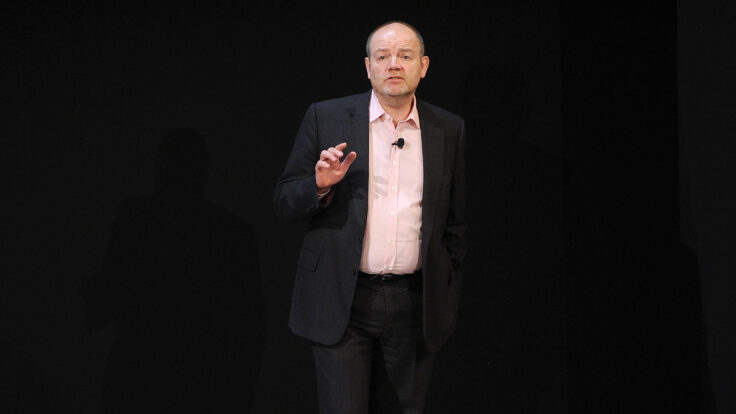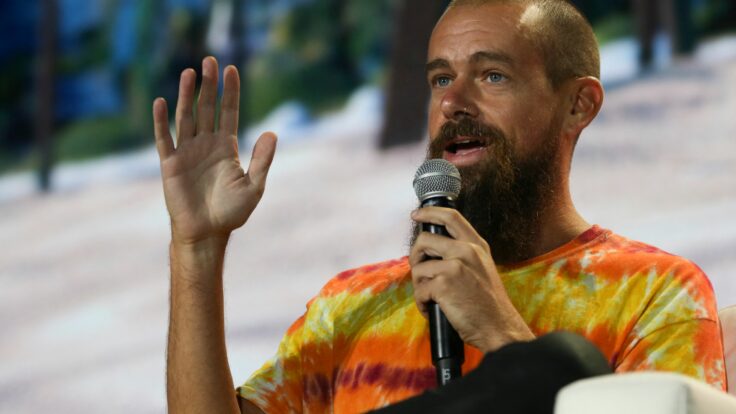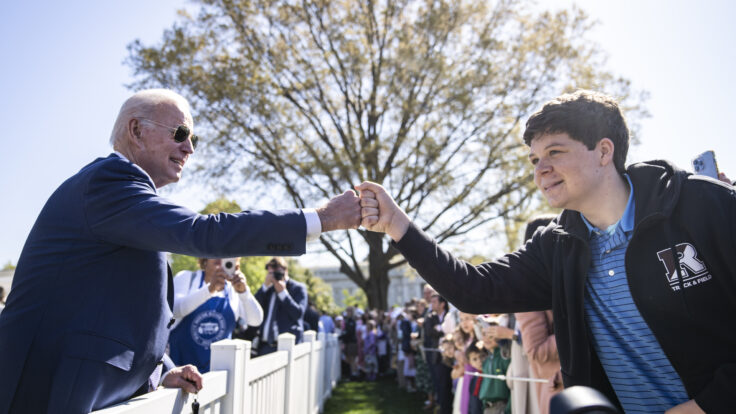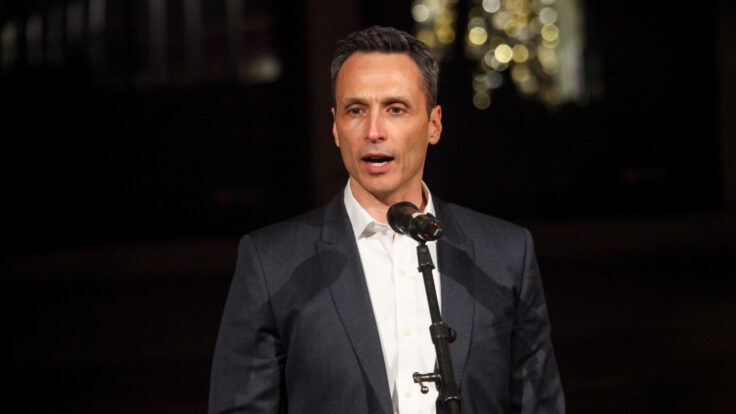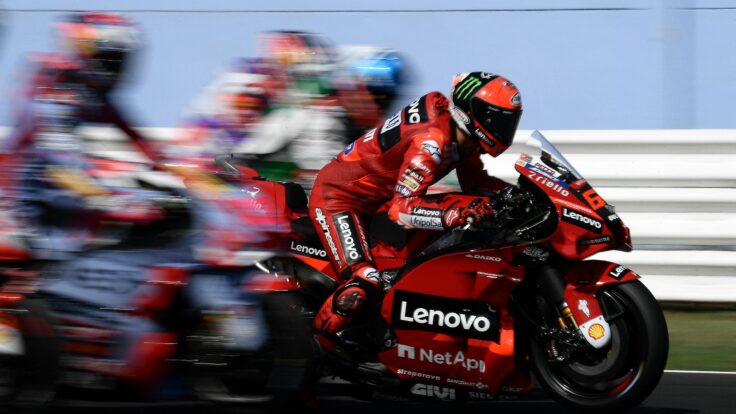|
Good morning,
Thanks for reading The Backstory, which features the best work produced by my partners at Puck.
It was another truly incredible week, as they all are, here at Puck: Dylan Byers got to the bottom of the Washington Post national nightmare; Matt Belloni polled Gen Zers on Hollywood; Rachel Strugatz chronicled a Gwyneth Paltrow business model challenge; Julia Ioffe checked in on Putin’s troll farm; Lauren Sherman recounted a fashion-P.E. love story; John Heilemann opined on the futility of covering Trump’s veepstakes while Tara Palmeri identified the knaves trying to influence the former president’s decision. Meanwhile, Eriq Gardner assessed some Hollywood M&A hurdles; John Ourand broke the news on Stephen A. Smith’s $18 million-a-year offer; Marion Maneker surveyed the Basel new-money crowd; and Bill Cohan previewed the next shoe to drop in the Paramount dreadscape.
Check out these stories, and others, via the links below. And stick around for the backstory on how it all came together.
Programming Note: On July 10 in D.C., Peter Hamby will host an exclusive panel conversation focused on shifting voter dynamics ahead of the ’24 election—based on data revealed through Puck’s polling partnership with Echelon Insights—with a special emphasis on the outsize impact of women voters over the age of 50. Peter will be joined by Kristen Soltis Anderson from Echelon Insights, Margie Omero from GBAO, and Nancy LeaMond from AARP. To attend, click here to sign up for Puck, and email Fritz@puck.news for registration information.
|
| On Thursday afternoon, I was hightailing it from Puck’s new Tribeca headquarters to the subway at Calatrava’s Oculus when I saw that I had missed a call from my partner John Ourand. It was early afternoon, and already into the 90s—one of those New York summer days when everyone is squinting and sweating and generally miserable, and the air is filled with the smells wafting from hot dog and halal carts. And yet, the weather seemed metaphorically appropriate for a number of the storylines animating the Puck cinematic universe—the Paramount deal heat, the bonfire at Jeff Bezos’s Washington Post, Trump’s sweltering veepstakes—all of which appeared ready to boil over.
Before boarding the train, I popped into one of the many sprawling, Dubai-style malls that have overtaken Lower Manhattan in the past decade, paused to bask in the industrial air conditioning, and rang John back. From the moment he picked up, I could tell he was onto something juicy—great reporters give off an unmistakable flair when they’ve just landed a scoop, and John’s excitement was palpable. He’d just learned the latest details of ESPN’s public attempt to re-sign its star talent, Stephen A. Smith. The network, John told me, was offering Smith a four-year deal worth about $18 million a year—serious dough, especially in the declining pay TV business. And yet, it wasn’t enough. John said that Smith’s agents at WME had been looking for around $25 million per year, which was more in line with what the network paid to license Pat McAfee’s show.
Reliable readers of The Backstory, in particular, and Puck, in general, know that I am a glutton for the slings and arrows of media transformation. I came of age professionally at the beginning of the end of the magazine era—when a larger-than-life industry became a veritable freckle—and I’ve become attuned to the pattern recognition of other similar declines. As ESPN’s linear footprint shrinks from some 100 million American homes to around 60 million, the network has articulated a strategy focused on new platforms, live sports rights, and an effort to become the main port of call for all digital sports viewers. It’s an ambitious plan, and one that must be executed as cable revenues steadily decrease.
In pursuit of this digital transformation, much like CNN and MSNBC before it, ESPN has been forced to say goodbye to many cherished talents—Steve Young, Jeff Van Gundy, etcetera—and to double down on the major stars like McAfee and Smith. And yet, as I spoke to John, I couldn’t help but wonder whether Smith, a truly homegrown talent at the network, was a Rachel Maddow or a Tucker Carlson. Did the executives up in Bristol need to worry that their ratings would crater without him? Did they believe the world would end if he moved over to NBC Sports or, say, Amazon? Was he responsible for the platform or vice versa? A recent perusal of excommunicated TV talent suggests that the show actually does go on—and, also, that most stars ultimately don’t want to give up their platform, regardless of how hard they negotiate.
John beautifully lays out the calculus in Stephen A.’s $18 Million Offer, a story that sent tremors through the sports media industry. On some level, the piece reminded me of what I saw in the magazine business, where a generation of successful editors were phased out and companies elevated only a couple of superstars, like Graydon Carter, Anna Wintour or Joanna Coles. Stephen A. may be riffing volubly and obstreperously all the way to the bank, but the underpinnings of his success point to an industry that is truly enfeebled.
If the business of sports isn’t your thing, I’d turn your attention to a couple other stories that animate the high season here at Puck. My partner Bill Cohan, who has been chronicling the Redstone family tragedy since Shari was still in exile, offered his perspective on the most recent M&A debacle. In A Paramount Post-Postmortem, Bill reveals some stunning developments surrounding the deal’s collapse and also previews the likely second coming of the Apollo/Sony bid. Meanwhile, Dylan Byers has quickly become the industry’s leading scholar on its most unavoidable topic—the roiling internecine conflict at The Washington Post, where the newsroom is in open revolt against its C.E.O. In The Will Lewis Living Wake, Dylan digs to the true bottom of the scandal and reveals the details that the Post’s perspicacious journalists missed.
Finally, as the election season heats up and the culture prepares for next week’s presidential debate, on CNN, I’d turn your attention to two stories from Puck’s extraordinary political team. In The Vacuity of Trump’s Veepstakes, John Heilemann lays out the true political consequences awaiting Trump’s V.P. hopefuls. And in Dial M for Murdoch, Tara Palmeri captures the surreal plot among Trump’s cronies to influence his decision. Together, they offer an unprecedented view into how Republican politics works these days. Indeed, these are the great stories of our time, and precisely what you should expect to read about at Puck.
Have a great weekend,
Jon |










